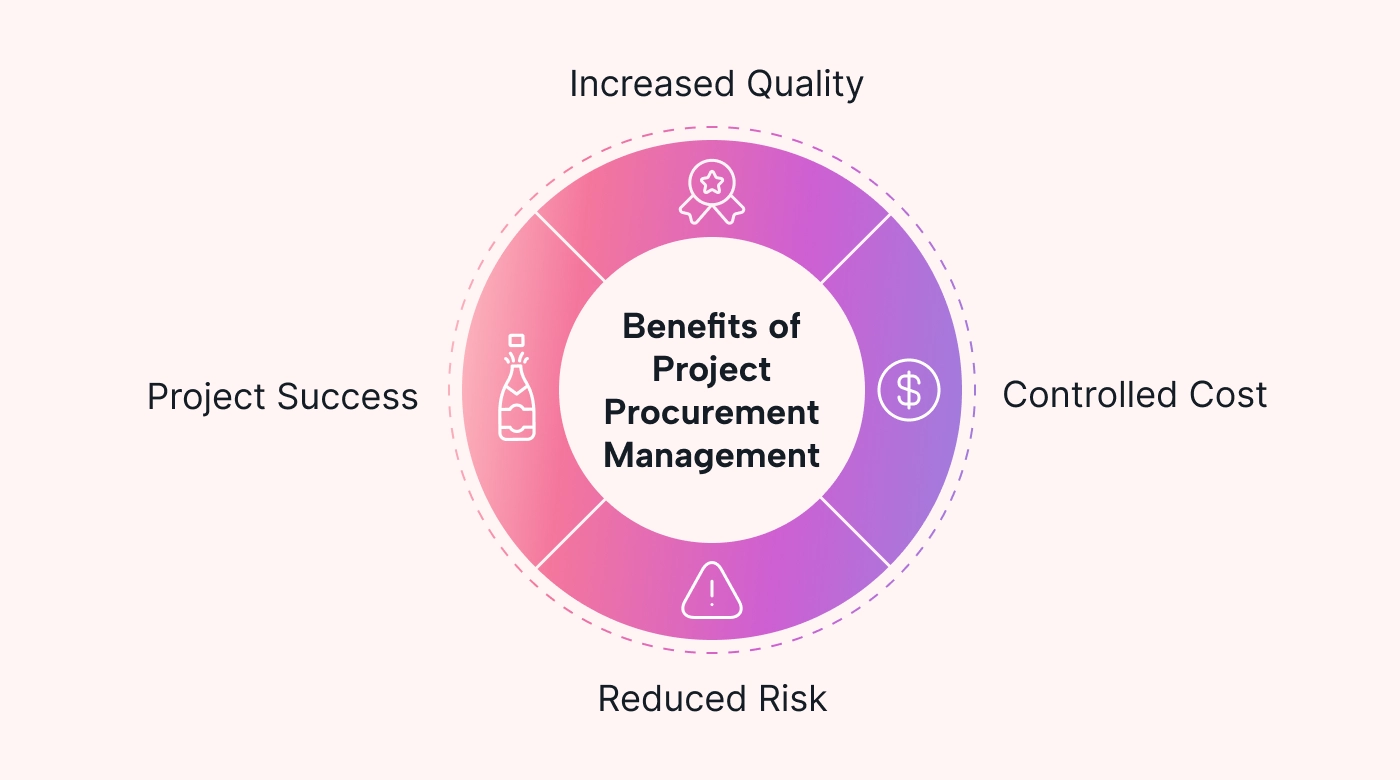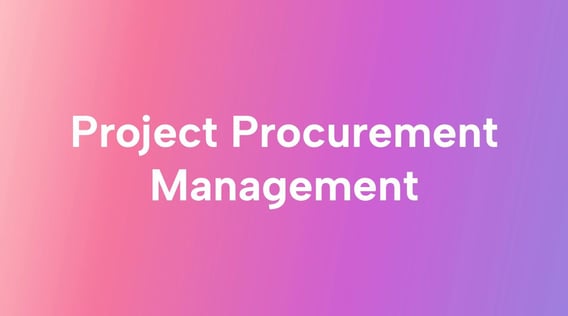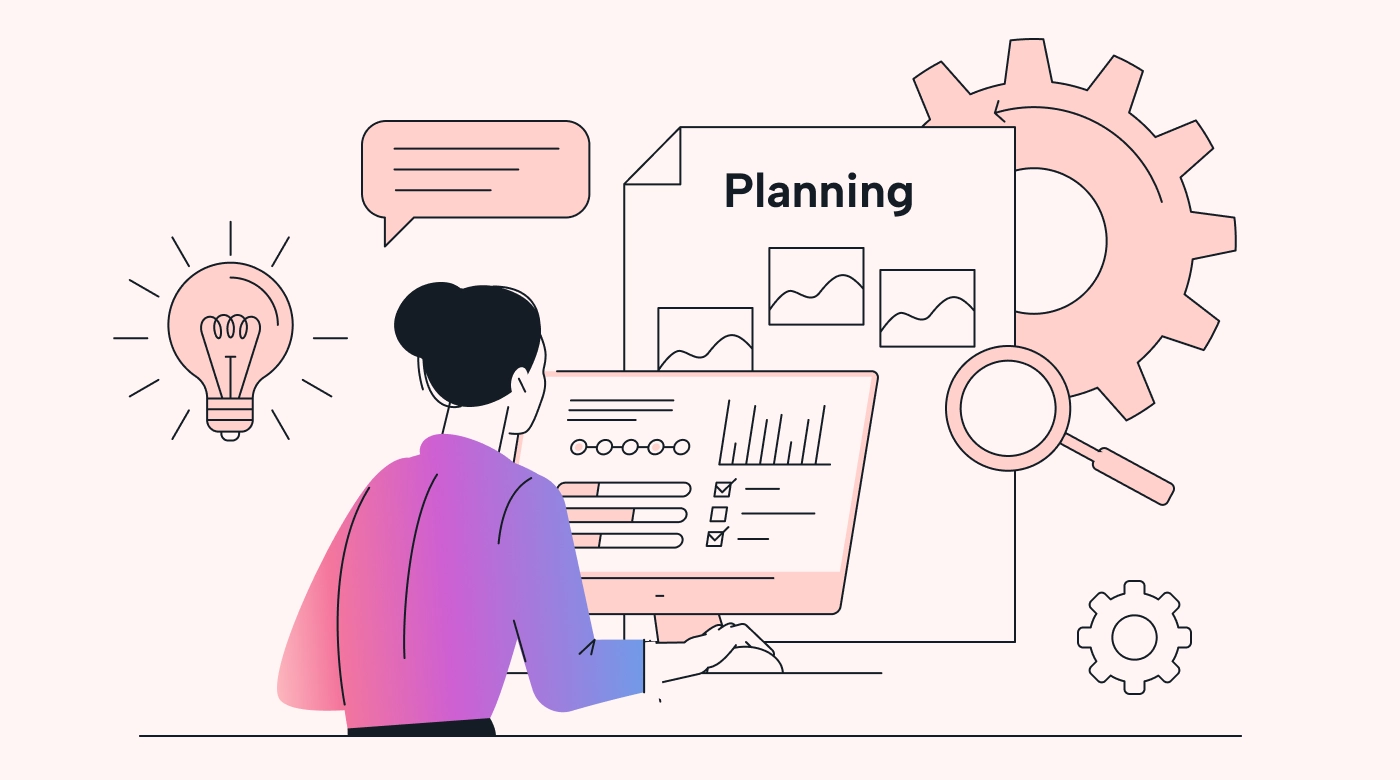Running an in-house project is quite simple. The resources you’ll need to call on are almost always available to you. But it’s much trickier when you must rely on external suppliers to deliver materials and equipment on time. And the complexity ratchets up another notch when you’re using specialist contractors. Will they be available when you need them?
That’s where project procurement management becomes important. When you’re managing a project, you need to be sure that everything is in place when it needs to be. Your project team members must be fully available and have all the resources they need when they need them.
Project procurement management is part of how you do that. And it’s a critical part of the discipline of project management. In this article, we’ll unpack the principles involved and strategies and tools you can use to ensure that absent resources don’t derail your project.
Types of project resources
Depending on the types of projects you get involved with, you’ll have different resources you need to procure. For instance, a construction project would require loads of building materials, construction vehicles, and equipment, as well as the services of architects, engineers, and surveyors.
Let’s focus on the equipment for a moment. Some of that used on construction projects is very expensive, and it doesn’t make sense for construction companies to own it. What would they do with it when they don’t have an active project? It’s why there’s a roaring trade in contracting this type of thing.
And if we look at some of the people you’d need, an architect is required early on for the plans and the design, and they’ll dip in periodically after that. The engineer does it the other way around because they must sign off on the final result.
You wouldn’t want both involved on a full-time basis because that’d get you into cost overrun territory. Instead, you must bring them in when needed and only for as long as you need them each time.
Another different example
Similarly, a software development project would require fewer materials and probably no heavy equipment. But you’d need far more specially skilled people to work on your project. And the cost of those project team resources will drive your procurement strategy.
You might subcontract an organization for specific project tasks. In that case, you’d probably go through a formal procurement process specifying a range of things, like a statement of work, along with cost. Or you could just hire freelance coders with the expertise you need. You may use a simple contract with an hourly rate, a projected cost, and a project milestones and deliverables list.
Either way, it’s project procurement, and you want to maximize your use of low-cost external resources while minimizing the need for expensive resources. But there’s a balance to find in your project team. You can’t afford to sacrifice quality on the altar of cost savings.
Other resources
Finally, facilities are another resource sometimes needed for projects. Let’s say your project is to produce a documentary film. Finishing the production isn’t the end. In fact, it could just be the beginning.
You’d need to hire a facility for your first screening and for screenings around the country. And you’d need to book them for as long as you need them and not a moment longer, or your costs could balloon out of control.
What is project procurement management?
Balancing the use of resources, particularly expensive ones with special skills and those with long lead times, is what project procurement management is all about. And doing it right could mean the difference between success and failure for your project.
But what is it? It’s a process used when you need to purchase, hire, or borrow products or services from beyond your project team. And when dealing with large external organizations, there are procurement rules to follow and a whole process that unfolds.
But the most critical part for a project procurement manager is timing. It has to deliver what you need when you need it in the project schedule. Failing to do that can cause delays and trigger the domino effect.
Standard procurement processes
It’s not exactly the PMBOK Guide or the Prince2 Handbook. However, the project management textbook in the British Columbia Open Collection has a brilliant chapter on the project procurement management process. As a bonus, it’s written in plain English and doesn’t cost a penny.
The textbook describes the process as following a logical order:
- Plan what you need
- Plan procurements
- Request for proposals or quotation
- Evaluate the results
- Pick a winner
- Sign the contract.
But it doesn’t end there. After the work begins, you’ll need to monitor progress to ensure that the contract is followed and that the products or services are of the desired quality. And that applies to materials, equipment, and specialist personnel.
Depending on the size of the organizations you’re dealing with, you may encounter some strange terminology and documents. Motion provides a glossary of project management terms, and here’s a sample related to the procurement process:
- Contract management: Overseeing and administering contracts.
- Procurement contract: Agreement between the parties with terms and conditions.
- Project procurement plan: Focused mainly on timing and with the project management plan as an input.
- Procurement negotiation: Bargaining to set the best terms, pricing, and conditions.
- Purchase order (PO): A formal document listing product/service descriptions, quantities, prices, and delivery dates.
- Requests for proposals (RFP): Invitation to submit proposals to supply goods or services.
- Requests for quotations (RFQ): Formal request to be quoted on specific goods or services.
- Supplier relationship management: CRM for suppliers, effectively.
- Vendor selection: Evaluating and selecting the best vendor for the specified products or services.
Types of contracts
The section discussing contract types is among the most useful parts of the textbook’s description of procurement strategy. These are important in projects because outside contractors aren’t usually motivated by the same things as the members of your own project team are. So you try to motivate them with a contract.
But you must remember that a contract is only a vehicle for establishing the terms. You still have to manage relationships, and the best way to do that is to treat contractors as partners, particularly at major decision points.
If you have to keep going back to the contract terms, it’s not working.
 |
Fixed-price contracts
No matter the quality of the product or service actually delivered, the contractor is paid the same. Obviously, that’s provided the product or service meets or surpasses the contracted standard of quality.
Fixed-price contracts are usually used where the product or service supplied is a commodity of sorts. And smart project managers will sign up two or more potential vendors of the same product or service.
And while such a contract does offer predictable costs, there are potential risks, mostly related to project change. If a change in scope occurs that demands a change order from the contractor, the price of that change will come at a premium.
But you can build some flexibility into a fixed-price contract:
- A price adjustment clause allows complex projects running over several years to adjust pricing based on inflation or other factors.
- An incentive fee offers suppliers a financial inducement if they perform above the project baseline.
Cost-Reimbursable Contracts
With these contracts, you agree to pay the contractor based on what it costs them to provide the service or products. Also known as cost-plus contracts, these agreements are usually chosen when there’s some uncertainty about the scope of work or costs associated with it.
The contractor has a negotiated benefit embedded in the contract, but their effective rate is lower than usual because they have little or no risk of cost increases. However, potential suppliers on this type of contract aren’t motivated to find ways to reduce costs unless specifically incentivized. That’s why there are four types of cost-reimbursable contracts:
- A fixed fee guarantees an agreed fee or profit amount that doesn’t change.
- A percentage fee reimburses direct costs and adds a percentage fee to cover overheads and provide a sweetener.
- An incentive fee encourages better performance in areas critical to the project.
- An award fee reimburses all agreed costs and adds a success fee based on the contractor’s performance on the project.
Project manager’s role and responsibilities in procurement
The precise role and responsibilities of the project manager depend, like so many things, on the size of the animal. On a small project involving small organizations, you'll cover everything yourself but with less to actually do.
And on the flip side, with a much bigger project, you may have a procurement team. But you’d still need to be involved in the planning stages and would control procurement activities. At the same time, you’d be able to farm out some responsibilities and duties — or at least share them.
As a project manager, you have two roles in the project procurement management plan: planning and controlling. And it may sound quite simple, but it isn’t.
Planning
This is where you build your project procurement management plan. It begins more or less the same time you start your project planning and develop your project schedule. Once you know the project goals and objectives, you can figure out how to deliver them. It’s when you look at the resources you have and identify the gaps.
Procurement will likely fill those gaps. It’s when you must ask yourself a bunch of questions to set the procurement management plan in motion. First, there are the general questions:
- Which materials and services must be externally sourced?
- Which would be better for the project: to buy in rather than find internally?
- What are your company’s policies and procedures for external purchases?
And then looking at each item or service that needs to be procured:
- When do you need them?
- What type of contract should be used for this item or service?
- Are there key milestones associated with this item or service?
- What legal terms or conditions must be met?
- How will you identify the potential suppliers you need?
- Do you have a preferred vendor for this item or service?
- Will you put out a request for proposal? And if so:
- What are the terms and conditions?
- How will the contract be managed?
- How will you evaluate bids?
Each of these questions may lead to others that need to be asked. And all of them will guide you in what’s far from a simple process.
Controlling
Once you’ve created your procurement management plan, set terms, begun to conduct procurements, and, where necessary, lined up backup suppliers, it’s time to shift gears to monitoring and control. If you have a project administrator or someone to help with project coordination, you could leave it to them.
If not, you’d have to make sure deliveries happen when they should, and contractors arrive when they are expected. Either way, you still have to keep an eye on things and step in if something is going awry. But you’ll also have plenty of other stuff on your plate:
- Procurement planning
- Stakeholder coordination
- Vendor coordination
- Communication of progress.
The skills required
Most of the expertise needed to be good at project procurement management is similar to that needed by a project manager:
- A knack for strategic planning
- Supplier and stakeholder relationship management
- Strong negotiation skills
- Effective risk mitigation.
If you do it well, you’ll be positioning yourself to have a successful project. Your planning phase and execution will be focused on aligning the procurement activities with project strategy and stakeholder expectations.
You’ll need to be a skilled communicator capable of robust vendor negotiations if you’re going to secure the best terms and contracts with potential suppliers. You may have a procurement team with specialists and legal support to help you with this. But it’ll fall to you to identify, anticipate, and mitigate procurement risks.
 |
Benefits of project procurement management
The fact is that the success of your project depends on the timely delivery of necessary products, materials, goods, and services. So, if you don’t consider project procurement management, you could be setting your project up to fail. But there are real benefits to doing it well.
Increased quality
Project stakeholders always want the best possible outcomes from their investment of time and money. With project procurement management, you can negotiate detailed contract requirements that best serve your project requirements. That can only improve the quality of the deliverables during and at the end of the project lifecycle.
Controlled cost
Project budgets are always tight, and a project manager is always looking for ways to shave a bit off to boost contingency reserves. By carefully negotiating procurement terms, you can cut costs on your project. You can also find products and services that meet your project requirements without blowing the project budget.
Reduced risk
Projects always have risk attached. And one of the big ones is outsourcing. When you need to do it as the project manager, you must also mitigate the risks. You do this by being involved in selecting preferred suppliers and the products or services they’ll provide for your project.
Get your project procurement management in Motion
Managing project procurement requirements can get very complicated very fast. And if you don’t have a procurement team or the resources of a multinational organization, you need all the help you can get. And Motion’s Task Manager app may be just the ticket.
Motion takes the details you throw at it (task priorities, due dates, assignees., etc.) and compiles a schedule that’ll keep you on top of exactly what needs to come in, from which supplier, and when. And if something is delayed, it can help you optimize the overall project schedule to manage the impact of that delay.
You should give it a whirl before you start your next project. And there’s no better time than the present while Motion is still offering a 7-day free trial.

After 40-odd years of working in technology, project management, media, and marketing, Brian's career and growth journey has exposed him to a wide range of niches. He brings this breadth of knowledge and expertise in his content work through enriched storytelling and original concepts that make SaaS content engaging and accessible for readers of all stripes.






